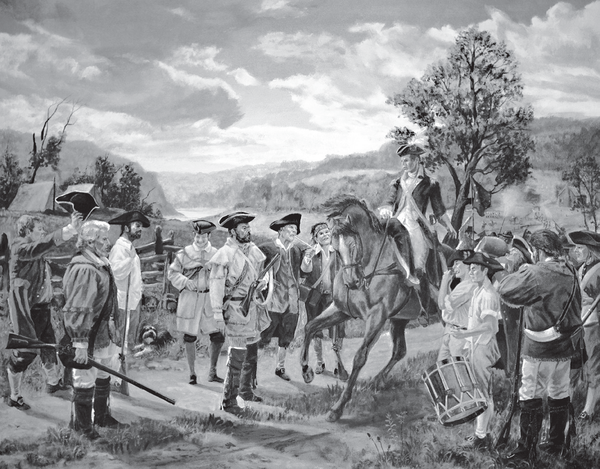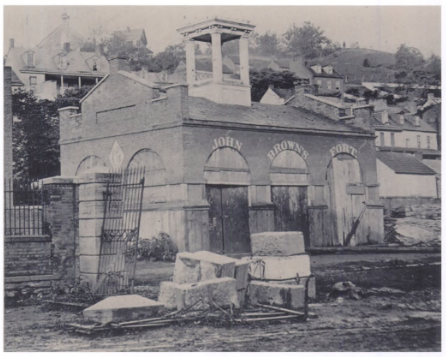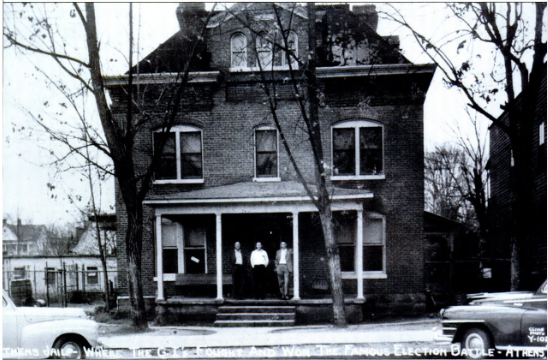Americans have a long history of protest dating back to the Colonial period. But the rebellious spirit of America did not die with the end of the Revolution – since gaining independence, American citizens have used uprisings and protests as a means to defy unfair laws, highlight inequality, and push for social change. Read on to learn about just 5 of America’s biggest rebellions!
Whiskey Rebellion

Like many American rebellions, the Whiskey Rebellion was born out of a tax. The so-called whiskey tax of 1791 was actually a tax on all distilled spirits, but became known as the whiskey tax because of the drink’s popularity. This tax was the first time the government had taxed a domestic product, rather than something imported from overseas. As a result, many distillers were angry with (and resisted) the tax, viewing it as going against the revolutionary principle of “no taxation without representation.” The government, for their part, argued that the tax was perfectly legal underneath the new Constitution.
The tension between the two groups grew steadily until July of 1794, when 500 armed men attacked the home of a tax collector in Western Pennsylvania. The government, led by President George Washington, responded by sending not only peace negotiators, but also an army of 13,000 militiamen to stop the insurrection. This army, led by Washington himself, arrived to find that the protestors had dispersed, and the event ended without any violence. However, the rebellion served as an example to the former colonists that the government could (and would) enforce laws, and restrict violent uprisings against them.
Shays’ Rebellion

By 1786, despite gaining full independence only three years before, many former colonists were unhappy with the new American government. Led by the Articles of Confederation, a precursor to the Constitution, the federal government was generally viewed by many as weak, and ineffective. As a result, when the state of Massachusetts began pressing farmers to pay taxes in hard money, rather than goods, unrest began to build. Many farmers relied on bartering, and lacked any hard money, especially given that many had been paid with the “chance for independence” for their services in the Revolutionary War.
As a result, a veteran and farmer named Daniel Shays organized a group of 4000 rebels, who attempted to storm the Springfield, Massachusetts armory, and use the obtained weapons to overthrow the government. Too poor and weak to fight the insurrection themselves, the federal government relied on the Massachusetts militia and a private militia to fight the rebels. These two militias were quickly successful – after firing a couple of cannons and wounding several men, they drove back the rebels from the armory. The rebels, stunned by the force, retreated, and the rebellion was quickly over.
Despite being unsuccessful, Shays’ Rebellion did act as a catalyst for the Constitutional Convention, as the government realized it would need more power than it had under the Articles of Confederation to enforce rules and taxes.
John Brown’s Raid on Harpers Ferry
Prior to the outbreak of the Civil War, many abolitionists worked to promote the welfare and freedom of slaves, especially in the South. Abolitionist John Brown took this activism one step further, however, and attempted to organize an armed slave revolt in Harpers Ferry, Virginia. Brown’s ultimate goal was to help the slaves take over a US arsenal in the area, but he could only organize a group of 22 men, including 8 white men, 12 free black men, and one free and one fugitive slave. Despite asking for assistance from noted abolitionism leaders Harriet Tubman and Frederick Douglass, Brown was left to lead the raid himself.
Unfortunately, the rebellion was quickly crushed by a company of Marines, and over 15 people, including 6 civilians, died in the violence. Brown was subsequently captured and executed for organizing the raid. Although the insurrection was ultimately unsuccessful, it has been widely regarded as a “dress rehearsal” for the true Civil War, and further inflamed the tensions between Northern anti-slavery advocates and white Southern slaveholders.
Stonewall Riots
The mid-20th century was a difficult and dangerous time for the LGBTQ+ community in America. The legal system was staunchly homophobic, and many states prohibited same-sex relationships, declaring them forms of sodomy, punishable by fines and jail time. During this same time, the LGBTQ+ community of Greenwich Village in New York City had found some safety in a mafia-run bar called the Stonewall Inn. The bar catered to the whole community, but was well-known as a location for ostracized members of the community, such as drag queens or transgender individuals.
Because of this, the bar became the subject of a police raid on June 28, 1969. Police raids of gay bars was commonplace at the time, but the raid quickly became violent as the bar parishioners refused to surrender. This first night of rioting led to several subsequent riots, and although no one was killed in the violence, residents of the Village quickly joined together to fight for gay rights. Their activism efforts led to some of the first gay pride parades in 1970, and have been credited as the beginning of the modern LGBTQ+ rights movement.
Battle of Athens

McMinn County, Tennessee, was not known for political cleanliness. Run by the political machine of a sheriff named Paul Cantrell, the county, including the city of Athens was subject to the whims of a crooked sheriff and legislator, who would often harass citizens in an attempt to hand out tickets and make arrests. After World War II, as veterans returned home to McMinn County (and Athens specifically), Cantrell and his cronies focused their arrest efforts of GI’s, who were well-known for enjoying drinking. Annoyed with Cantrell and his dishonest tactics, the GI’s formed their own political party to try to oust Cantrell from his post. However, the corrupt sheriff didn’t give up easily, and he stuffed ballot boxes to ensure his own victory.
After being accused of voter fraud, the sheriff sent armed cronies (so-called “deputies”) to patrol poll stations, where they beat and arrested GI poll watchers attempting to prevent fraud. After the vote was cast, the sheriff then stole the ballot boxes, and barricaded himself with his deputies in the local Athens jail. Enraged, the ex-GI’s began attacking the building with rifles, and the two sides began an all-out battle, injuring several men. Eventually, the GI’s began using dynamite to break up the jail, and Cantrell was forced to surrender. After the ballots were finally counted, five GI’s were elected to office, where they restructured the government in an attempt to prevent any future corruption in the area.

